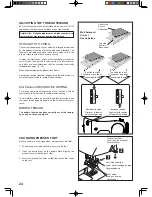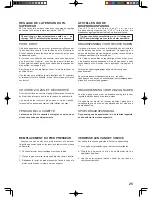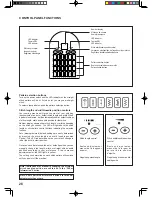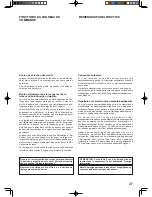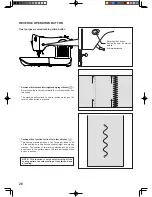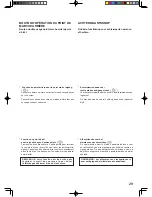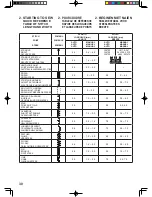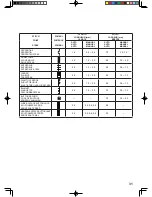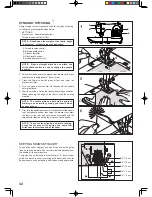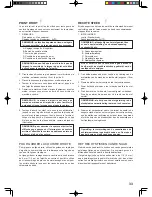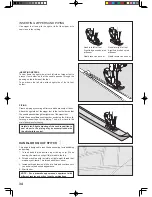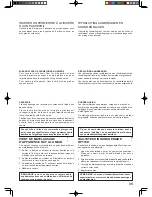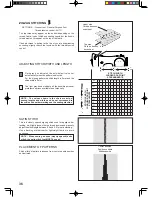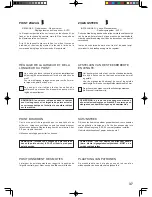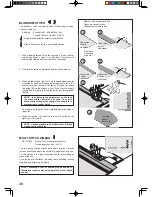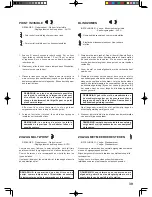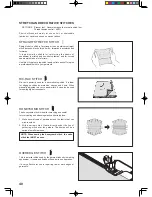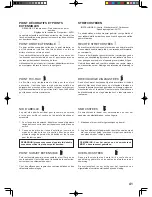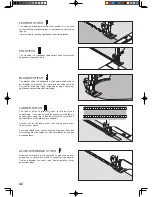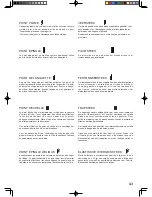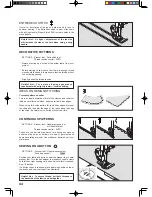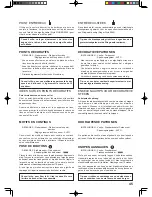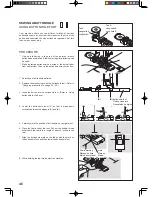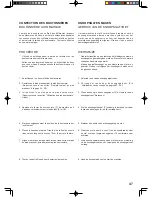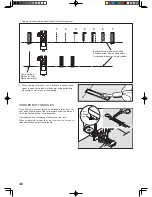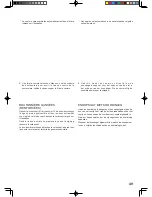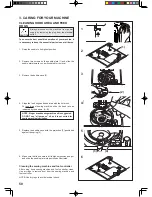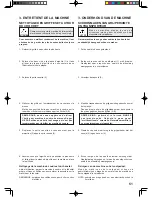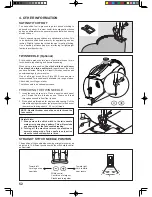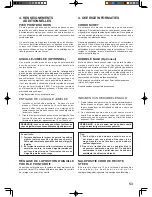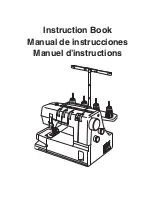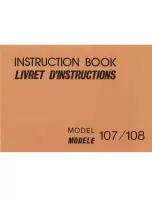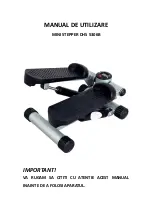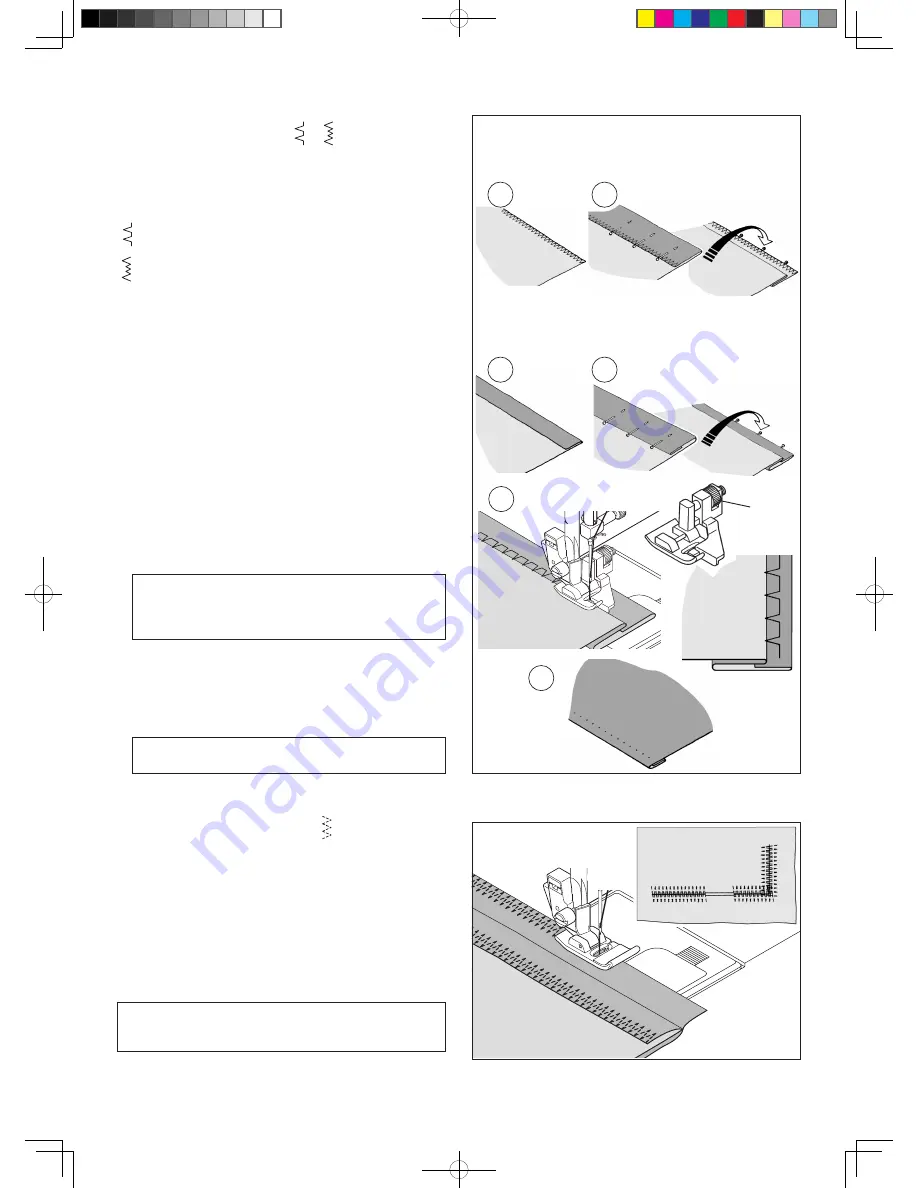
38
Medium to heavyweight fabric
Tissus moyens et lourds
Middelzware tot zware stof
Under side
Envers
Onderkant
Under side
Envers
Onderkant
Under side
Envers
Onderkant
Under side
Envers
Onderkant
Fine fabric
Tissus fins
Fijne stof
Top side
Endroit
Bovenzijde
1. With matching thread finish the raw edge. On fine fabric,
turn up and press a small ½” or less hem. On medium to
heavyweight fabrics overcast the fabric’s raw edge.
2. Now fold the fabric as illustrated with the wrong side up.
3. Place the fabric under the foot. Turn the handwheel counter
clockwise by hand until the needle swings fully to the left. It
should just pierce the fold of the fabric. If it does not, adjust
the guide (B) on the blindhem foot (A) so that the needle
just pierces the fabric fold and the guide just rests against
the fold.
Sew slowly, guiding the fabric carefully along the edge of
the guide.
4. When completed, the stitching is almost invisible on the
right side of the fabric.
BLINDHEM STITCH
Settings : Presser foot - Blind stitch foot
: Thread Tension Control: AUTO
The blindhem stitch is primarily used for hemming curtains,
trousers, skirts, etc.
B
A
1
2
1
2
3
4
NOTE: It takes practice to sew blind hems. Always
make a sewing test first.
NOTE: In addition to the adjustment on the foot,
the stitch width control can be used. The stitch
width control changes the swing of the needle for a
more narrow or wider stitch.
-
Regular blind stitch for normal woven fabrics
- Elastic blind stitch for soft, stretchable fabrics
MULTI-STITCH ZIGZAG
This is a strong stitch because as its name implies, it makes
three short stitches where the normal zig-zag makes only one.
For this reason it is highly recommended for overcasting all
types of fabrics.
It is also ideal for bartacks, mending tears, patching, sewing
towelling, and attaching flat elastic.
SETTINGS : Presser foot - General purpose foot
: Thread tension control - AUTO
NOTE: Mending a tear or overedging as shown in
illustration requires manual adjustment of the length
control.

